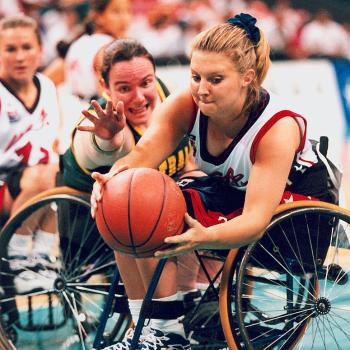The Jerusalem Post has what I think is a helpful discussion of why two different studies of the Pfizer vaccine’s effectiveness show radically different results.
Between this and the acknowledged reality of vaccine-breakthrough infections and post-COVID reinfections, I think what we need to recognize is that humans don’t, at this time, have the technology to eradicate COVID-19. What we have is the technology to radically reduce (not eliminate) the vulnerability of high-risk persons from a virus that is likely to remain in steady circulation for the foreseeable future.
For the individual, then, there is no choice of completely avoiding COVID-19 altogether, short of perpetual isolation. The choice is whether one’s inevitable intermittent exposure to the virus will happen with or without the aid of vaccines, and with or without the aid of measures to reduce the viral load of any given exposure.
My personal public health wish list in light of that paradigm:
- Normalize staying home when you’re sick. (Looks like that would help with asthma as well.)
- Recognize that risk levels vary, and therefore normalize the using of extra precautions (masks, ventilation, distancing, etc.) by those at higher risk, without any of the hysterical drama on both sides that has become the national temper-tantrum. [Likewise, those who simply prefer additional measures should be free to use them, no further explanation required.]
- Acknowledge vaccination for what it is: A pretty darn good intervention that is not without risks, is not a monolith, and which remains an emerging treatment about which we are still learning.
- Quit acting like it’s normal to demand that people undertake a potentially risky medical intervention that is only barely-studied in the scheme of things. There is a lot we do not yet know about any given COVID-19 vaccine. It is hubris in the extreme to think that all other people must make the same risk-benefit calculation as yourself (or myself — recap: I’m fully vaccinated).
- Get serious about accurate public health messaging (not mandates, just messaging) to get more of the population out of the controllable high-risk categories.
In a decade, we’ll know enough about COVID-19 vaccines to be able to confidently determine whether mandating such a vaccine for any given category of persons (healthcare workers, for example) is warranted. At the moment, though, alternate risk-reduction strategies are a legitimate choice, and frankly if the waning effectiveness of the Pfizer vaccine in Israel is a herald of life six months from now, it may well be the only viable choice on the table for many people.
(That is not my hope. I’m a big big big fan of vaccines for polio, diphtheria, tetanus, all that jazz. Would like to see COVID come and go, done. That’s my hope. But wanting a vaccine-induced cure-all is not the same as marrying myself to a line of wishful thinking to the point that I trample on other people’s civil rights as if I know more science than, at this time, can possibly be known.)
Anyhow, back to that final point: Getting yourself into a lower-risk category.
You can’t control your age, you can’t control certain underlying health conditions. My experience is that many people cannot control all the factors that contribute to their personal obesity. It’s an extremely complex health condition. Stories of once-and-for-all successful weight loss are true but rare.
However: There is a dramatic silence in the public health messaging about the fact that the products filling 90% of any given grocery store are major contributors to the obesity epidemic. There is a dramatic silence in the public health messaging about the fact that perpetual snacking on processed and sugary foods and beverages is a modern cultural norm that is killing us. COVID is having a field day in the industrialized world in part because of the way that we eat.
I’ve been running an experiment on myself over the past several months where instead of doing the “all things in moderation” approach to healthy eating, I completely cut out all added sugar and processed carbs (think: white flour, chips, etc.). The experiment was unrelated to a desire to lose weight or to reduce my COVID-19 risk, for those who are curious.
Here is something I have learned: When you go from “every now and then” to “never” you discover just how astonishingly large a volume of a typical American diet among health-conscious people consists of health-sabotaging junk. You discover just how often you are the only person not eating the stuff, and for that you’re the freak not them.
[If you’re wondering, I did not, during Phase I of the experiment, discuss the experiment with anyone except immediate family. Now it’s out, so Phase II begins. But I say that because the uncomfortable experience of being That One Weird Person was not because I was sitting on the restaurant patio going on and on about my special special diet. I was just eating what I chose and politely saying “No thank you,” zero explanation or justification, if offered something I didn’t wish to eat.]
This experiment has convinced me that a massive number of COVD-19 deaths in the United States can be traced back, in part (obviously the virus itself is the primary cause, duh), to our national daily partaking in “just one little treat.”
People who were going to get sick, likely very sick, instead died because they had a risk factor, obesity, that was directly fueled by the way that we as a nation eat and don’t even notice.
So I’d like to see our public health agencies take on junk food culture for serious. Not by violating anyone’s civil rights, but just by saying, out loud and proud, “A few of you can get away with it, but most of y’all need to never drink another Coke or sugary Starbucks drink again.”

Image: Cover art for The Girl Crusoes, circa 1912, public domain. No idea what’s in the book (I can guess), but the image of three school girls setting off in a rowboat on an adventure, with a title like that, well, it’s a metaphor for something.












